Child abuse and neglect are critical public health concerns, and healthcare providers play a key role in early identification and intervention. This training helps medical professionals recognize physical and behavioral signs of abuse, such as unexplained injuries or fearfulness. Participants will learn how to create a safe space for disclosure and navigate mandated reporting procedures with confidence. Through case studies and best practices, the course equips providers with the skills to act swiftly and support victims effectively.
What You Will Learn:
Different forms of child abuse and neglect
Common signs and symptoms of abuse and neglect in children
Risk factors that may increase the likelihood of child abuse and neglect
How to document suspected cases of child abuse and neglect
Procedures for reporting suspected child abuse and neglect
Details:
Course length: 1 hour; CME: 1
Languages: American English
Key features: Audio narration, learning activity, and post-assessment.
Get Certified
American Medical Compliance (AMC) is a leader in the industry for compliance, Billing, and HR solutions. To become certified, please visit us at: American Medical Compliance (AMC).
Reach out for other courses by visiting the AMC Course Library.
Overview of Child Abuse and Neglect
The first step in helping abused or neglected children is learning to recognize the signs of child abuse and neglect. The presence of a single sign does not prove child abuse is occurring in a family, but a closer look at the situation may be warranted when these signs appear repeatedly.
Healthcare providers play a crucial role in identifying and responding to child abuse and neglect, but recognizing the signs requires specialized training. This course equips medical professionals with the skills to detect key indicators, such as sudden behavioral changes or untreated medical conditions. Participants will learn how to assess concerning patterns and take appropriate action.
Physical Abuse
Physical abuse is intentional bodily injury.
Some examples include:
- Slapping
- Pinching
- Choking
- Kicking
- Shoving or
- Inappropriately using drugs or physical restraints.
Healthcare providers must be equipped to recognize and respond to cases of physical abuse and neglect, as early intervention can be lifesaving. This training helps medical professionals identify signs of intentional bodily harm, such as bruises or signs of restraint, and understand the impact of neglect, including malnutrition and untreated medical conditions. Participants will learn how to assess risk factors and navigate reporting obligations to protect vulnerable individuals.
Emotional Abuse and Neglect
Emotional Abuse is mental or emotional injury that results in an observable and material impairment in a child’s growth or psychological functioning.
It includes extreme forms of punishment such as confining a child in a dark closet and rejecting treatment for a child.
Emotional abuse can have profound and lasting effects on a child’s mental and emotional well-being. This training teaches medical professionals how to identify signs such as severe anxiety or developmental delays. Participants will also learn how to assess caregiver interactions and document concerns effectively. By gaining the knowledge and skills to detect emotional abuse and intervene appropriately, healthcare providers can play a critical role in protecting children.
Sexual Abuse
Clinical Practice: Recognizing Child Sexual Abuse—What Makes It So Difficult?
The exact prevalence of CSA remains unknown. It is estimated that the worldwide prevalence of CSA ranges from 3 to 31%. Girls appear to have a twofold higher risk of becoming CSA victims compared to boys. Prevalence studies of CSA in young children (infants and preschoolers under the age of 6 years) are limited.
Recognizing and responding to child sexual abuse (CSA) is one of the most challenging yet critical responsibilities for healthcare providers. This training equips medical professionals with the knowledge to identify key indicators, such as STDs, genital injuries, unexplained pain, and age-inappropriate sexual behavior, while understanding the long-term physical and psychological impacts of CSA, including chronic pain, reproductive health issues, and psychiatric disorders. Participants will learn best practices for early detection, sensitive communication, proper documentation, and mandated reporting to ensure victims receive the intervention and support they need. Through expert guidance and real-world case studies, this course empowers providers to take informed action in safeguarding vulnerable children.
Responsibilities in Identifying Abuse
Assessment
To diagnose a patient with child maltreatment is difficult since the victim may be nonverbal or too frightened or severely injured to talk. Also, the perpetrator will rarely admit to the injury, and witnesses are uncommon. Physicians will see children of maltreatment in a range of ways that include:
- An adult or mandated reporter may bring the child in when they are concerned for abuse.
- A child or adolescent may come in disclosing the abuse.
- The perpetrators may be concerned that the abuse is severe and bring in the patient for medical care.
- The child may present for care unrelated to the abuse, and the abuse may be found incidentally.
Diagnosing child maltreatment is complex, as victims may be too young, frightened, or injured to disclose abuse, and perpetrators rarely admit wrongdoing. This training provides healthcare providers with the skills to assess potential abuse cases through careful observation, history-taking, and clinical evaluation. Participants will learn how to recognize red flags in injuries, conduct separate interviews with caregivers and children, and document findings accurately to support proper diagnosis and intervention. The course also covers best practices for handling disclosures, identifying incidental signs of abuse, and navigating mandated reporting requirements, ensuring providers are prepared to take appropriate action to protect vulnerable children.



